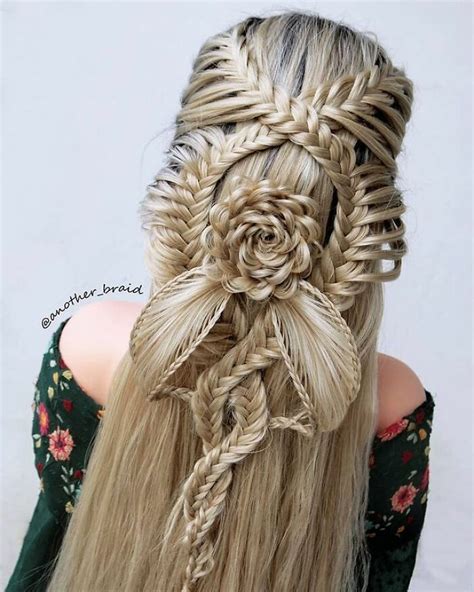Introduction
Braiding human hair is an ancient art form that has been practiced for centuries across diverse cultures. From intricate plaits to elaborate coiffures, the versatility of braided hair knows no bounds. In recent years, braided human hair has gained renewed popularity as a symbol of cultural expression, personal style, and creative ingenuity.

Historical Significance
Braided hair holds deep cultural significance in many societies. For instance, in African cultures, braids often represent social status, clan affiliations, and spiritual beliefs. In Chinese culture, intricate braids were worn by women during the Tang dynasty as a sign of beauty and nobility. Victorian women in Europe adorned their hair with elaborate braided buns and ringlets, reflecting the era’s fashion sensibilities.
Modern Trends in Braided Human Hair
Today, braided human hair is experiencing a renaissance in popularity. Celebrities, fashion designers, and hair enthusiasts embrace the art form as a means of personal expression and style innovation. Box braids, cornrows, French braids, and fishtail braids have become ubiquitous in urban and fashion-forward circles.
Key Figures in the Braided Hair Industry
According to the NPD Group, the market for hair extensions, including braided human hair, reached $1.6 billion in 2021. The global hair extension market is projected to grow at a CAGR of 6.7% from 2023 to 2030, reaching a value of $3.5 billion by 2030.
Braiding Techniques and Applications
The art of braiding human hair encompasses a wide range of techniques, each with its own unique look and feel. Some of the most popular braiding techniques include:
- Box Braids: Square-shaped braids created by parting the hair into small sections and feeding extensions into the natural hair.
- Cornrows: Raised, three-stranded braids that are tightly woven and often used to create intricate designs on the scalp.
- French Braids: Three-stranded braids where a new strand of hair is incorporated with each pass.
- Fishtail Braids: Braids that resemble a fishtail, created by splitting the hair into two sections and weaving them together.
These techniques can be used to create a vast array of hairstyles, from protective styles to ornamental works of art.
Creative New Applications for Braided Human Hair
Beyond traditional hair styling, braided human hair is finding innovative applications in various fields:
- Fashion: Designers are incorporating braided hair into textiles, accessories, and haute couture gowns.
- Art: Hair braiding has become a medium for contemporary artists to explore identity, culture, and social issues.
- Therapy: Braiding hair has been shown to have calming and meditative effects, leading to its use in therapeutic settings.
Generating Ideas for New Applications
To foster creativity and generate new ideas for applications of braided human hair, consider the concept of “braidweaving.” This term encompasses the intersection of braiding techniques with other disciplines and industries. By exploring unconventional pairings, such as braiding with robotics or braiding with music, new and innovative applications can be discovered.
Tables: Useful Information about Braided Human Hair
| Table 1: Types of Braiding Techniques |
|—|—|
| Technique | Description |
| Box Braids | Square-shaped braids with extensions |
| Cornrows | Raised, three-stranded braids |
| French Braids | Three-stranded braids with incorporated hair |
| Fishtail Braids | Braids resembling a fishtail |
| Table 2: Cultural Significance of Braided Hair |
|—|—|
| Culture | Significance |
| African | Social status, clan affiliations, spirituality |
| Chinese | Beauty, nobility |
| Victorian | Fashion, etiquette |
| Table 3: Braided Hair Industry Statistics |
|—|—|
| Market Size (2021) | $1.6 billion |
| Projected Growth Rate (2023-2030) | 6.7% |
| Forecast Market Size (2030) | $3.5 billion |
| Table 4: Creative Applications of Braided Human Hair |
|—|—|
| Field | Application |
| Fashion | Textiles, accessories, haute couture |
| Art | Contemporary installations, identity exploration |
| Therapy | Calming, meditative effects |
Tips and Tricks for Braiding Human Hair
- Prep the hair: Detangle and comb the hair thoroughly to remove any knots or tangles.
- Use the right tools: A rat-tail comb, hair clips, and a spray bottle filled with water can help with precision and hydration.
- Start small: Practice on small sections of hair before attempting more complex braids.
- Be patient: Braiding can take time, so relax and enjoy the process.
- Experiment: Don’t be afraid to try different techniques and create your own unique styles.
Frequently Asked Questions (FAQs)
Q: How long do braided hairstyles last?
A: Braided hairstyles can last anywhere from a few days to several months, depending on the technique used and how well they are maintained.
Q: Is braiding damaging to hair?
A: When done correctly, braiding is not inherently damaging to hair. However, it is important to avoid pulling the hair too tightly or keeping the braids in for extended periods.
Q: What are the benefits of braiding hair?
A: Braiding hair offers numerous benefits, including preventing breakage, protecting against damage, promoting hair growth, and creating versatile hairstyles.
Conclusion
Braided human hair is an art form that transcends time and culture. Its versatility and significance have made it a symbol of creativity, cultural identity, and personal style. As the popularity of braided hair continues to grow, we can expect to see even more innovative and groundbreaking applications of this age-old technique in the years to come.
